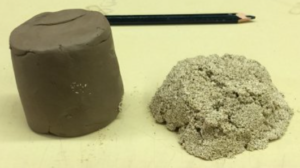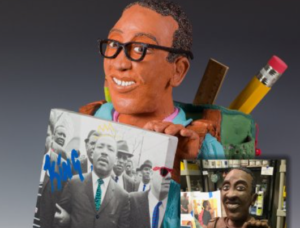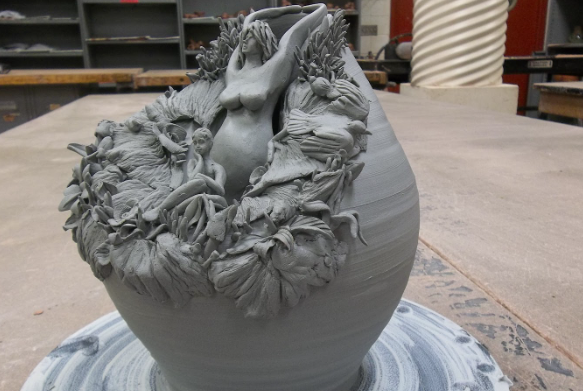Table Of Contents
- 1 Unveiling the World of Sculpting with Low-Fire Clay
- 1.1 A Spectrum of Advantages:
- 1.2 Unleashing Your Creativity:
- 1.3 Session 2: Mastering the Tools and Techniques of Low-Fire Clay Sculpting
- 1.4 Essential Tools for Your Sculptural Journey:
- 1.5 Fundamental Techniques to Unleash Your Creativity:
- 1.6 Beyond the Basics:
- 1.7 Session 3: Putting Your Knowledge into Practice: A Hands-on Low-Fire Clay Project
- 1.8 Project: The Expressive Bowl
- 1.9 Materials:
- 1.10 Instructions:
- 1.11 Beyond the Bowl:
- 1.12 Embrace the Learning Process:
- 1.13 Session 4: Shaping Your Future: FAQs for Your Low-Fire Clay Adventures
- 1.14 Q: What is the difference between low-fire clay and other types of clay?
- 1.15 Q: How long does low-fire clay take to dry?
- 1.16 Q: Can I use any kiln for firing low-fire clay?
- 1.17 Q: Is low-fire clay food-safe?
- 1.18 Q: How do I store unused low-fire clay?
- 1.19 Q: Can I recycle low-fire clay scraps?
- 1.20 Q: Where can I find resources and inspiration for low-fire clay sculpting?
- 1.21 Q: What are some tips for improving my low-fire clay sculpting skills?
Unveiling the World of Sculpting with Low-Fire Clay
Sculpting with low-fire clay offers an accessible and enriching pathway to unleash your inner artist and explore the transformative power of clay. This versatile medium, perfect for beginners and experienced creators alike, allows you to bring your imagination to life in tangible, lasting form.
In this introductory session, we’ll delve into the captivating world of low-fire clay, exploring its characteristics, benefits, and diverse applications.
What is Low-Fire Clay?
Low-fire clay, unlike high-fire clay requiring intense temperatures, can be fired in a kiln at much lower temperatures, typically ranging from 1800°F to 2000°F (982°C to 1093°C). This makes it a readily accessible and beginner-friendly option as it doesn’t require specialized equipment or expertise. Additionally, its lower firing temperature contributes to its affordability compared to other types of clay.
A Spectrum of Advantages:
Sculpting with low-fire clay offers a plethora of benefits for both aspiring and established artists:
- Versatility: Low-fire clay readily adapts to various sculpting techniques, catering to diverse artistic styles and preferences. Whether you’re drawn to the simplicity of pinch pottery, the intricate details achieved through coil building, or the expressive freedom of modeling, low-fire clay provides an ideal canvas for your creative vision.
- Ease of Use: This clay’s soft and pliable nature makes it easy to shape and mold, even for beginners. It allows for smooth surfaces, intricate details, and flexibility during the sculpting process.
- Forgiving Nature: Unlike some other clay types, low-fire clay is less prone to cracking and allows for adjustments and corrections during sculpting. This forgiving nature offers a sense of ease and comfort, especially for beginners who are still learning the ropes.
- Accessibility: Firing low-fire clay requires less intense temperatures, making it readily accessible even with limited equipment. You can use your home oven with a special kit or seek out local studios with kilns available for community use.
- Safety: Low-fire clay is non-toxic and safe for everyone to use, making it a suitable medium for individuals of all ages and skill levels.
Unleashing Your Creativity:
The world of sculpting with low-fire clay opens a door to a vast array of creative possibilities. You can explore various techniques, experiment with different textures and colors, and bring your unique artistic vision to life in a tangible form. Whether you’re a seasoned artist seeking a new creative outlet or a curious beginner eager to explore the world of clay sculpting, low-fire clay offers a welcoming and rewarding journey.
In the next session, we’ll delve deeper into the various techniques and tools used in sculpting with low-fire clay, providing you with the foundational knowledge to embark on your creative journey.

Session 2: Mastering the Tools and Techniques of Low-Fire Clay Sculpting
As we continue our exploration of the fascinating world of low-fire clay, this session will equip you with the essential tools and techniques needed to transform a lump of clay into a captivating creation.
Essential Tools for Your Sculptural Journey:
- Sculpting tools: Your sculpting arsenal should include a variety of tools, such as spatulas, loop tools, and sculpting knives, to shape, smooth, and detail your clay creations.
- Mixing tools: To ensure thorough mixing of the clay and proper curing, you’ll need containers and mixing spatulas. Disposable gloves are also crucial for protecting your hands during this process.
- Rolling pins and texture sheets: Rolling pins help create flat sheets of clay, while texture sheets add unique patterns and textures to your sculptures.
- Work surface: A smooth and non-stick surface, like a glass or silicone mat, prevents the clay from adhering to your workspace and facilitates sculpting.
Fundamental Techniques to Unleash Your Creativity:
- Mixing: Carefully follow the manufacturer’s instructions to mix the clay and hardener in the correct proportions. Thorough mixing ensures proper curing and prevents an uneven finish.
- Shaping: Use your fingers and sculpting tools to mold the clay into your desired form. Low-fire clay’s softness and pliability allow for smooth surfaces and intricate details.
- Smoothing: After achieving the desired shape, use your fingers or a wet tool to smooth out any rough edges and achieve a polished finish.
- Texturing: Experiment with different tools and techniques to add textures and patterns to your sculptures. This can be achieved using brushes, combs, texture sheets, or even found objects.
- Joining pieces: Low-fire clay readily adheres to itself, allowing you to easily join different pieces to create larger and more complex sculptures.
- Curing: Allow the finished sculpture to cure for the recommended time, typically 24-48 hours, before handling or applying further embellishments.
Beyond the Basics:
Once you’ve mastered the fundamental techniques, you can challenge yourself and delve deeper into the world of sculpting with low-fire clay by:
- Exploring advanced techniques: Experiment with sculpting techniques like carving, slip trailing, and sgraffito to add depth and dimension to your creations.
- Incorporating glazes: Glazing your sculptures adds a vibrant coat of color and a beautiful finish. Explore various glazes and experiment with different firing temperatures to achieve unique effects.
- Combining materials: Don’t be afraid to incorporate other materials, such as beads, wires, or found objects, into your sculptures to add texture, interest, and personalization.
Remember, the most important ingredient is your creativity. Don’t be afraid to experiment, explore, and let your imagination guide you as you embark on your sculpting journey.
In the next session, we’ll embark on a hands-on exploration by walking you through a step-by-step guide for a basic low-fire clay sculpting project.

Session 3: Putting Your Knowledge into Practice: A Hands-on Low-Fire Clay Project
Having equipped you with the essential tools and techniques of low-fire clay sculpting, let’s now embark on a practical adventure. This session will guide you through a basic project, allowing you to put your newly acquired knowledge into practice and experience the joy of creating with clay:
Project: The Expressive Bowl
This project is perfect for beginners as it involves basic shaping techniques and encourages experimentation with texture and color. Let’s delve into the step-by-step process:
Materials:
- Low-fire clay in your desired color(s)
- Mixing tools and containers
- Sculpting tools (spatulas, loop tools, sculpting knives)
- Rolling pin or flat surface
- Texture sheet (optional)
- Wet sponge or brush
- Kiln or access to a kiln
Instructions:
- Mix the clay: Carefully follow the manufacturer’s instructions to mix the clay and hardener in the correct proportions. Ensure thorough mixing for a proper cure and even finish.
- Shape the base: Take a portion of the mixed clay and roll it out on a flat surface or using a rolling pin to create a flat sheet. This will be the base of your bowl.
- Form the walls: Using your fingers or a sculpting tool, gently lift the edges of the clay sheet to create the walls of your bowl. Pinch and shape the walls, ensuring they have a smooth and even thickness.
- Refine the shape: Use your sculpting tools to further refine the shape and size of your bowl. Smooth out any rough edges and create a clean and polished finish.
- Adding texture: If desired, use a textured sheet to imprint patterns onto the surface of your bowl. Alternatively, use your tools or found objects to create unique textures.
- Finishing touches: Once you’re satisfied with the shape and texture, use a wet sponge or brush to smooth out any remaining imperfections. You can also add embellishments like beads or other decorative elements at this stage.
- Drying and curing: Allow your bowl to dry completely before firing it in a kiln. Follow the recommended firing temperature and schedule for your specific type of low-fire clay.
- Glazing (optional): Once the firing is complete, you can apply a glaze to your bowl for added color and shine. Follow the instructions for your chosen glaze and fire the bowl again at the appropriate temperature.
Beyond the Bowl:
This project is just a starting point to ignite your creative journey. As you gain experience and confidence, you can venture into more complex projects, exploring various techniques, incorporating diverse materials, and adding intricate details to your sculptures.
Embrace the Learning Process:
Remember, the journey of sculpting with low-fire clay is a continuous learning process. Don’t be discouraged by initial challenges; embrace them as opportunities to learn and grow. Be patient, experiment freely, and most importantly, have fun! As you refine your skills and express your unique creativity, you’ll be amazed by the beautiful and captivating creations you can bring to life with this versatile medium.
In the next session, we’ll conclude our exploration of low-fire clay sculpting by addressing frequently asked questions to empower you on your creative journey.
Session 4: Shaping Your Future: FAQs for Your Low-Fire Clay Adventures
As your journey with low-fire clay sculpting unfolds, it’s natural to have questions along the way. This session addresses some frequently asked questions to empower you on your creative path and equip you with the knowledge to navigate the world of low-fire clay with confidence:
Q: What is the difference between low-fire clay and other types of clay?
A: The primary difference lies in the firing temperature. Low-fire clay requires significantly lower temperatures compared to other types like stoneware or porcelain. This makes it more accessible for beginners and individuals with limited equipment.
Q: How long does low-fire clay take to dry?
A: Drying time varies depending on the thickness of your sculpture and the ambient humidity. Generally, smaller and thinner pieces dry faster than larger or thicker ones. Expect to wait for a minimum of 24 hours before firing.
Q: Can I use any kiln for firing low-fire clay?
A: Ideally, use a kiln specifically designed for low-fire temperatures. Trying to fire low-fire clay in a kiln meant for higher temperatures can lead to damage or melting of your sculpture.
Q: Is low-fire clay food-safe?
A: While low-fire clay itself is generally considered non-toxic, it’s not always food-safe. Glazes play a crucial role in ensuring food safety. Choose glazes specifically labeled as food-safe and follow proper firing procedures.
Q: How do I store unused low-fire clay?
A: Store unused clay in an airtight container in a cool, dry place. This will prevent it from drying out and hardening prematurely.
Q: Can I recycle low-fire clay scraps?
A: Yes, you can! Scraps can be reused by kneading them back into fresh clay. However, avoid overworking the clay, as this can affect its texture and malleability.
Q: Where can I find resources and inspiration for low-fire clay sculpting?
A: Numerous online resources offer tutorials, project ideas, and inspiration for low-fire clay sculpting. Additionally, consider joining online communities, attending workshops, and visiting local art studios for further learning and creative exchange.
Q: What are some tips for improving my low-fire clay sculpting skills?
A: Practice regularly, experiment with different techniques and tools, seek feedback from experienced artists, and most importantly, have fun! The more you explore and create, the more you’ll refine your skills and discover the boundless possibilities of low-fire clay sculpting.
As you continue exploring the world of low-fire clay sculpting, remember that the most important element is your passion and creativity. Embrace the journey, learn from each experience, and let your imagination guide you as you shape your artistic vision into beautiful and enduring creations.
With this knowledge and a curious mind, you’re well on your way to mastering the art of low-fire clay sculpting. Keep exploring, keep creating, and keep shaping your future as an artist.

1 thought on “Sculpting With Low Fire Clay”